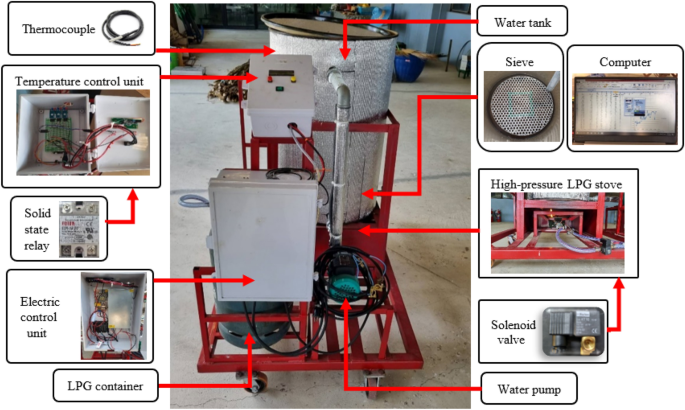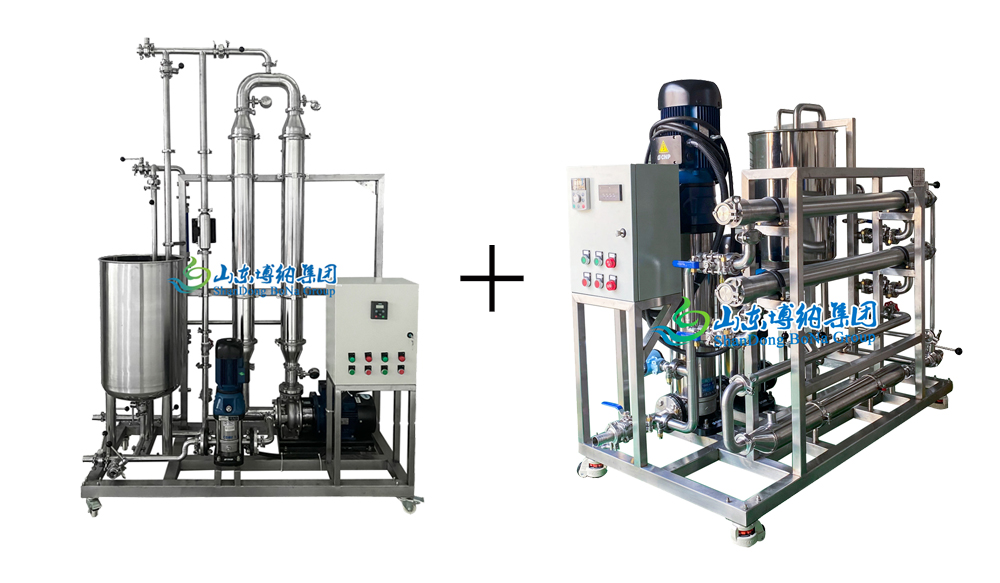Why Brands Are Investing in Products From Sugarcane for Sustainability
How Products From Sugarcane Are Changing the Eco-Friendly Market
Products originated from sugarcane are making significant strides in the green market. These innovations offer sustainable choices across numerous markets, from naturally degradable product packaging to renewable resource resources. As consumer demand for eco aware choices expands, sugarcane's flexibility is ending up being significantly noticeable. This change not just advertises sustainability however likewise presents economic opportunities. The complete level of sugarcane's impact on the market remains to be checked out.

The Surge of Sugarcane in Lasting Production
As markets significantly focus on sustainability, sugarcane has emerged as a vital element in environmentally friendly manufacturing processes. This functional crop is being made use of not only for its sweetener but additionally for its fibrous by-products, which function as renewable sources in various applications. Firms are using sugarcane-derived materials to develop bio-based options to standard plastics, textiles, and even biofuels. The farming of sugarcane also offers substantial benefits, as it can be grown in regions that call for less power and water compared to various other crops.Furthermore, the carbon sequestration capabilities of sugarcane add to reducing greenhouse gas discharges, making it a preferable alternative for ecologically mindful suppliers. As customers require greener items, the rise of sugarcane in lasting manufacturing lines up with global initiatives to mitigate environment change and advertise a round economy. This change not only sustains development yet additionally fosters a much more sustainable method to manufacturing throughout different markets.
Biodegradable Packaging: A Wonderful Remedy
Eco-friendly packaging made from sugarcane supplies a lasting option to standard products, highlighting its ecological advantages. As industries significantly adopt compostable options, the shift towards eco-friendly services ends up being a lot more noticable. This pattern not only addresses waste administration problems but also mirrors an expanding customer demand for lasting practices.
Lasting Product Perks
The shift towards lasting products is revolutionizing packaging options, with sugarcane-derived naturally degradable options becoming a leading contender. These products provide various ecological benefits, largely via their capacity to break down naturally, reducing land fill waste. Unlike standard plastics, which can take centuries to break down, sugarcane product packaging can return to the earth without leaving hazardous residues. Furthermore, the growing of sugarcane is frequently a lot more lasting, needing much less water and less chemicals compared to petroleum-based products. This not only decreases the carbon impact related to production however also sustains regional economic climates that depend on sugarcane farming. As businesses progressively prioritize environmentally friendly methods, sugarcane-derived packaging represents a practical and responsible selection for lowering environmental influence while meeting consumer demand for sustainable options.
Compostable vs. Standard Options
While traditional packaging choices have controlled the marketplace for decades, compostable alternatives acquired from sugarcane are getting traction as an extra sustainable choice. Standard packaging products, such as plastics, add significantly to environmental pollution and landfill overflow, usually taking centuries to decompose. In contrast, sugarcane-based compostable product packaging can break down in a matter of months when thrown away effectively. This rapid decay not only minimizes waste yet also enriches dirt, promoting a much healthier environment. Products From Sugarcane. In addition, compostable choices decrease dependence on fossil gas, as they are made from renewable energies. As consumers end up being significantly eco mindful, the change towards compostable packaging represents an important step in decreasing the eco-friendly impact of daily products
Sector Adoption Fads
As firms increasingly focus on sustainability, the fostering of eco-friendly packaging remedies is on the increase, specifically those acquired from sugarcane. This fad reflects a broader modification in customer preferences in the direction of ecologically friendly products, prompting companies to seek choices to conventional plastics. Sugarcane-based packaging not only minimizes dependence on fossil gas but additionally uses a renewable energy that can disintegrate naturally, minimizing land fill effect. Sector leaders throughout sectors, including food and drink, cosmetics, and ecommerce, are incorporating these options into their procedures. As understanding of environmental concerns grows, governing pressures and customer demand are anticipated to speed up the change towards these lasting alternatives. Ultimately, the change to sugarcane-derived eco-friendly packaging stands for a substantial step in the direction of a much more lasting future.
Eco-Friendly Textiles: From Field to Style
Environment-friendly fabrics, progressively preferred for their lasting attributes, are transforming the garment industry. Originated from eco-friendly resources like sugarcane, these materials offer a cutting-edge alternative to traditional textiles, which typically rely upon petrochemicals. Brand names are now exploring using sugarcane fibers, which can be refined into naturally degradable fabrics, decreasing environmental impact.The manufacturing process stresses minimal water use and lowers carbon emissions compared to conventional cotton and artificial fibers. In addition, sugarcane-derived textiles are not only eco-friendly however additionally show desirable top qualities such as longevity, breathability, and softness, attracting eco-conscious consumers.As the need for lasting fashion grows, suppliers are reacting by integrating these eco-friendly textiles right into their collections, cultivating an extra accountable industry. This change not just supports sustainable agriculture yet also urges advancement, bring about an extra round economic climate within the style industry.
Sugarcane-Based Biofuels: Powering a Greener Future
Sugarcane-based biofuels stand for a substantial advancement in the pursuit of sustainable energy sources, supplying a lasting option to fossil gas. Originated from the fermentation of sugarcane juice or molasses, these biofuels add to decreased greenhouse gas discharges and lower carbon footprints. As countries look for to shift away from typical energy resources, sugarcane biofuels are getting traction for their ability to generate energy with marginal environmental impact.These biofuels can be utilized in existing engines and infrastructure, reducing the change for consumers and industries alike. Furthermore, sugarcane has a high yield per acre contrasted to various other biofuel plants, making it an efficient choice for large-scale production. The cultivation of sugarcane can likewise support neighborhood economic situations, supplying tasks and enhancing agricultural sustainability. Sugarcane-based biofuels not only attend to energy requirements but likewise promote ecological stewardship and financial growth in neighborhoods.

Sustainable Construction Materials: Building With Sugarcane
Just how can a flexible plant like visit the website sugarcane change the building sector? Sugarcane uses innovative remedies for lasting construction products, offering a green alternative to standard choices. Originated from the plant, compounds and bioplastics are becoming viable materials for structure applications. These sugarcane-based items not just minimize reliance on fossil fuels but additionally reduced carbon impacts with their eco-friendly nature.Additionally, sugarcane fibers can be made use of in insulation and support, boosting architectural stability while maintaining sustainability. The light-weight and sturdy properties of these products enable energy-efficient building and construction methods, reducing source usage during structure processes.Furthermore, making use of sugarcane in building and construction aligns with circular economic climate principles, promoting waste reduction by utilizing byproducts from sugar manufacturing. As the need for eco-friendly building products climbs, sugarcane stands poised to reinvent the building and construction industry, leading the method for environmentally responsible development.
Reinventing Personal Treatment Products With Sugarcane
The combination of sugarcane in individual treatment items marks a substantial change towards sustainability. This pattern incorporates making use of sustainable ingredients, eco-friendly product packaging options, and the natural skin benefits of sugarcane. As customers increasingly focus on green alternatives, the appeal sector is reacting with cutting-edge formulations that harness the power of this versatile plant.
Lasting Components Change
As customers increasingly look for environmentally friendly alternatives, the individual care sector is undertaking a makeover, with sugarcane becoming an essential component. This renewable energy offers a lasting alternative to standard petroleum-based components, significantly decreasing the carbon impact related to item manufacturing. Sugarcane-derived components, such as glycols and surfactants, provide efficient performance while being biodegradable and non-toxic - Products From Sugarcane. Brands are incorporating these natural elements right into formulations for skincare, haircare, and cosmetic products, attracting environmentally conscious consumers. The change towards sugarcane not only addresses ecological problems yet likewise promotes an honest method to sourcing, benefiting regional farming neighborhoods. The lasting active ingredients change is improving personal care, urging an extra accountable consumer mindset and leading the means for greener advancements.

Eco-friendly Product Packaging Solutions
Naturally degradable product packaging remedies are obtaining grip in the individual care sector, driven by the need for lasting practices. Business are significantly turning to sugarcane-based products, which provide an environmentally friendly option to conventional plastic. This change not only reduces dependence on nonrenewable fuel sources yet likewise supports a circular economy by making use of renewable energies. Packaging made from sugarcane can break down much more normally, minimizing ecological influence and lowering land fill waste. Brands taking on these remedies enhance their interest eco mindful customers, straightening with a growing fad towards sustainability. As recognition of plastic pollution surges, the assimilation of sugarcane-derived packaging in personal care items positions companies as leaders in innovation, showing a commitment to shielding the planet while meeting consumer demands.
Natural Skin Advantages
Sugarcane is not only improving product packaging services but additionally changing individual care find more products through its natural skin advantages. Rich in antioxidants and glycolic acid, sugarcane extracts assist scrub dead skin cells, advertising a smoother and extra glowing complexion. The natural humectant residential properties of sugarcane bring in wetness, making it a reliable active ingredient in hydration-focused skin care solutions. In addition, sugarcane is understood to have anti-inflammatory residential or commercial properties, which can relieve aggravated skin and minimize inflammation. Its capability to support collagen production adds to improved skin flexibility and suppleness. As customers significantly look for green and lasting choices, individual treatment brand names are including sugarcane-derived components, aligning with the growing need for all-natural and effective skincare remedies that improve charm while Click Here valuing the environment.
The Economic Influence of Sugarcane in the Eco-Friendly Market
While the international need for sustainable items climbs, sugarcane emerges as a critical player in the environmentally friendly market. Its versatility enables it to change petroleum-based items in various markets, consisting of packaging, fabrics, and biofuels. This shift not just lowers dependence on nonrenewable fuel sources yet likewise boosts economic growth in sugarcane-producing regions.The financial effect is extensive, fostering and producing work development in lasting practices. Farmers take advantage of greater costs for natural and sustainably sourced sugarcane, while producers are incentivized to purchase green modern technologies. Additionally, the sugarcane market contributes to carbon sequestration, improving its allure to environmentally aware consumers.As companies significantly align with sustainability objectives, the financial importance of sugarcane remains to expand, positioning it as an essential gamer in shaping a greener future. This trend provides opportunities for financial growth, environmental conservation, and an improvement to a circular economic climate.
Frequently Asked Inquiries
How Is Sugarcane Cultivated Sustainably for Eco-Friendly Products?
Sugarcane is grown sustainably through methods such as plant turning, incorporated pest monitoring, and very little tillage. These techniques enhance soil wellness, reduce chemical inputs, and advertise biodiversity, eventually supporting eco-friendly product advancement and environmental conservation.
Are Sugarcane Products Extra Pricey Than Standard Materials?
The price comparison of sugarcane items versus traditional products commonly exposes higher prices for sugarcane products. Long-lasting environmental benefits and sustainability may warrant the preliminary expenditure, appealing to eco-conscious customers seeking greener alternatives.

Can Sugarcane Products Be Recycled Successfully?
The effectiveness of reusing sugarcane products mostly depends on details handling strategies and facilities offered. While some sugarcane-based products can be reused, obstacles continue to be regarding framework and consumer recognition, affecting general recycling rates.
What Is the Carbon Impact of Sugarcane Production?
The carbon footprint of sugarcane manufacturing differs, influenced by farming practices, land use changes, and transportation. Generally, sustainable cultivation approaches can considerably minimize discharges, placing sugarcane as a reasonably low-impact plant compared to others.
How Does Sugarcane Impact Citizen Ecosystems and Biodiversity?
Sugarcane cultivation significantly affects regional communities and biodiversity. It can lead to habitat loss and altered water resources, influencing flora and fauna. Nevertheless, lasting methods may alleviate these impacts, promoting environmental equilibrium and biodiversity preservation. The cultivation of sugarcane likewise provides considerable benefits, as it can be expanded in regions that require less energy and water contrasted to other crops.Furthermore, the carbon sequestration abilities of sugarcane contribute to decreasing greenhouse gas emissions, making it a preferable option for ecologically conscious producers. Naturally degradable product packaging made from sugarcane uses a sustainable choice to typical products, highlighting its environmental advantages. While standard product packaging options have actually controlled the market for years, compostable choices obtained from sugarcane are acquiring grip as a much more lasting choice. In addition, the sugarcane sector contributes to carbon sequestration, boosting its allure to eco mindful consumers.As businesses significantly line up with sustainability goals, the financial importance of sugarcane proceeds to expand, positioning it as a vital gamer in shaping a greener future. The cost comparison of sugarcane products versus traditional products often exposes higher prices for sugarcane items.